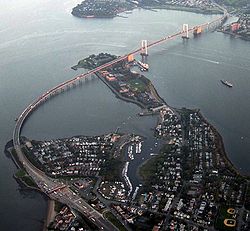Field locations you have loved
 Saturday, April 10, 2010 at 11:25AM
Saturday, April 10, 2010 at 11:25AM In this thread I want to hear about field locations YOU have loved, and WHY. Here's a couple of mine to get the ball rolling:
 Kedron Brook, Brisbane, Australia. A choked little stretch of suburban creek on the north east side of Brisbane Australia was a key field location for my PhD research, which was all about introduced (exotic) species and their parasites in rivers and streams in Australia. At one point just above the tidal influence - stylishly named KB216 for its map reference - this creek is basically completely exotic: plants, invertebrates, fish, the whole shebang. There aren't many parasites there, but those that were present were introduced hitchhikers. Not sexy, but a veritable Shangri-La for a student on the hunt for ferals...
Kedron Brook, Brisbane, Australia. A choked little stretch of suburban creek on the north east side of Brisbane Australia was a key field location for my PhD research, which was all about introduced (exotic) species and their parasites in rivers and streams in Australia. At one point just above the tidal influence - stylishly named KB216 for its map reference - this creek is basically completely exotic: plants, invertebrates, fish, the whole shebang. There aren't many parasites there, but those that were present were introduced hitchhikers. Not sexy, but a veritable Shangri-La for a student on the hunt for ferals...In the comments, tell us about a field location YOU have loved and why. Post links if you can find them.
 3 Comments |
3 Comments |  Email Article | tagged
Email Article | tagged  Australia,
Australia,  Brisbane,
Brisbane,  GBR,
GBR,  Heron Island,
Heron Island,  Long Island Sound,
Long Island Sound,  New York,
New York,  coral reef,
coral reef,  ecology,
ecology,  estuary,
estuary,  exotic,
exotic,  feral,
feral,  fieldwork,
fieldwork,  fish,
fish,  hypoxia,
hypoxia,  invertebrate,
invertebrate,  parasites,
parasites,  turtles
turtles 



